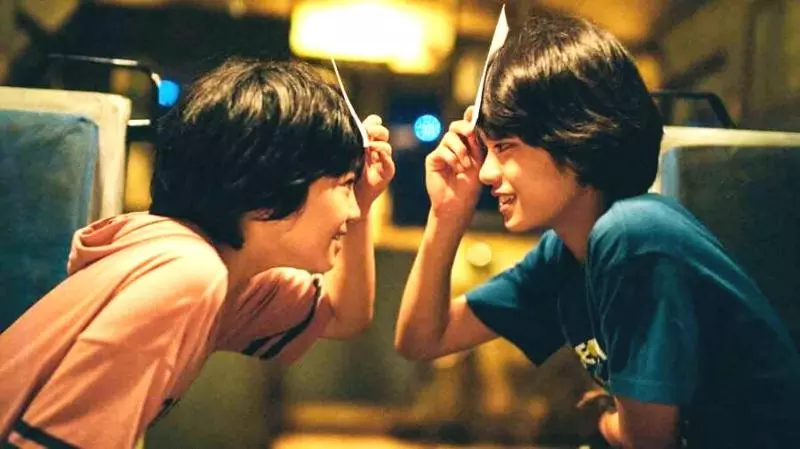On the first Friday of each month, CINE-PSIQ is held in Room 24 of the Psychiatry and Psychology Service of the General Calixto García University Hospital, in Havana. It is a cinephile space that privileges films with themes inherent to psychiatric disorders and psychological maladjustments. There is also room for achievements that reflect human conflicts and situations.
That without constituting a mental disorder as such, can put people’s emotional stability at risk. CINE-PSIQ is one of the central activities of a project of the Cuban Society of Psychiatry. Created and coordinated by the author of these lines. It is carried out from an academic perspective that uses the Didactic Film Debate as a format.
The group experience of a film debate to learn more about ourselves.
Film debate is a way that enables the exercise of opinion and open, direct and critical analysis. It is a space for listening to the opinion of others. He admits to thinking together, sharing feelings and questioning prejudices. This cinematographic format allows the subject to identify with certain situations and characters. Thus facilitating reflection and analysis of situations that, at first, might seem distant and thus enabling them to assume more active roles in the discussions.
Last Friday we had the opportunity to screen “Monster”, a 2023 Japanese film directed by Hirokazu Koreeda. A director who has built his filmography around the humanist and unprejudiced approach to the many social scourges that plague his country. The narrative structure that Koreeda chooses. When it comes to covering a multitude of social problems.
What is initially presented as the odyssey of a widowed mother who must deal with the school problems of her pre-adolescent son. Expands to accommodate several characters who complete a melodramatic narrative puzzle. The themes do not stop surfacing in an expansive story that hits its characters in an unforgiving way. There is the machismo of a culture that educates its boys to be “real men”, also the fear of institutions of seeing their reputation called into question. Or the loss of trust of parents towards the educational community. Through alcoholism, child abuse, bullying, the spread of hoaxes on social networks… There is still more, but it is worth not uncovering the secrets of a plot that seeks to surprise the viewer in each change of point of view.
A plot with parallel, perpendicular and oblique paths
The story is told from three perspectives: that of the mother, the teacher and the son. The way in which each of these visions traps the viewer and seduces him as a follower of his truth. It has a lot to do with the perception he has of the film, based on his sensitivity, his beliefs and personal experiences. At first it seems that we are facing the depression of an adolescent. A consequence of the mistreatment he receives at school by his teacher. Every event points to it: Minato’s hair watered in the bathroom, his escape in the night and the encounter with his mother under a tunnel in which, apparently alone, he asks: “Who is the monster?”
Three characters with different ways of looking at the facts. It is there that we discover what Hirokazu Koreeda wanted to show. In an interview he maintains: “It is the birth of emotions, of feelings. It is difficult to put into words what one feels. The film shows how these children try to overcome this situation.” Between the chaos, the complaints and the screams of Minato’s mother with the teachers, and viceversa. Minato’s relationship with Yori, his classmate, is discovered, buried, like an oasis. Both hide their friendship from the rest: they spend the afternoons together and play on an abandoned train to guess the monster (the drawing of an animal) that the other has stuck on his forehead. They give each other clues and laugh when they discover which one it is.
The structure, the meticulousness with which the script is constructed, is dismantled by the affection between Minato and Yori. Monster, more than a brain film (a puzzle or a riddle to be solved), is an emotional and human film. Koreeda uses cinema to apprehend the elusive: desire, the way in which Minato and Yori are crossed by it. The rest only surrounds the spring that flows from these feelings. I am referring to the bullying of the rest of the classmates towards Yori. The bond between Minato and his mother, as well as the possible power relations that arise in the school between the principal and the teachers, and between them and the students.
Dr. Elizabeth Méndez, the guest to present the film
To better unravel the riddles to be solved in this film. I had the pleasure of inviting Professor Elizabeth Méndez, a specialist in Child and Adolescent Psychiatry at the Community Center for Mental Health in Central Havana. A great cinephile with magnificent communicative qualities.
“This is a special film that shows subtleties that we must take into account for its analysis. And we must always find what is underneath, behind… I think that the first thing that caught my attention were the subtleties that surround a topic like bullying, subtleties that lead us to make associations of ideas about this phenomenon in the plot of the film. Is bullying alone or is it the result of other things? What is seen in an initial look is bullying, but this is accompanied by violence, silence, because violence and silence go hand in hand, also accompanied by fear as a recurring emotion.”
Who is the monster?
The specialist also wondered, and asked us:
“Who is the monster here? What is it? How is it? What shape does it have? The answers can change throughout the story being told. It is also worth asking: Perhaps at some point I have been a monster to someone? I believe that this is a film worthy of discussion and analysis from many points of view, which can be thought of in many ways. I invite you to the exchange of views to contribute to collective knowledge.”
After watching the film, we moved on to its analysis and discusión. The Cinedebate offers the possibility of enriching our understanding of the cinematographic work by sharing images and emotions of realities perceived with our own eyes. And those of others, with our ideas and also with the ideas of the others who participate in this extraordinary collective experience that enriches us from the group.
Suddenly discovering the truth of history through each of the perspectives is a futile task. The vision of the events of the mother and the professor contrast not only because of their ability to veer into a territory of reality plagued by suspicion. But also because of their clumsiness in not perceiving the feelings that exist between Minato and Yori: the elemental. The monstrous is presented, then, as the presentiment of being in front of the reflection of the other, of predicting his intentions.
The interpretation that is made of others will depend on how evil or beneficial one sees in the monster. It is possible to suspect that what each of the characters finds, rather than being someone else’s, is their own.
Translated by Aliani Rojas Fernandez
- There are four attachment styles: which one are yours? - 10 de December de 2025
- How can you help someone in a time of crisis? - 4 de December de 2025
- The Secret of People Who Live with Inner Peace - 1 de December de 2025

